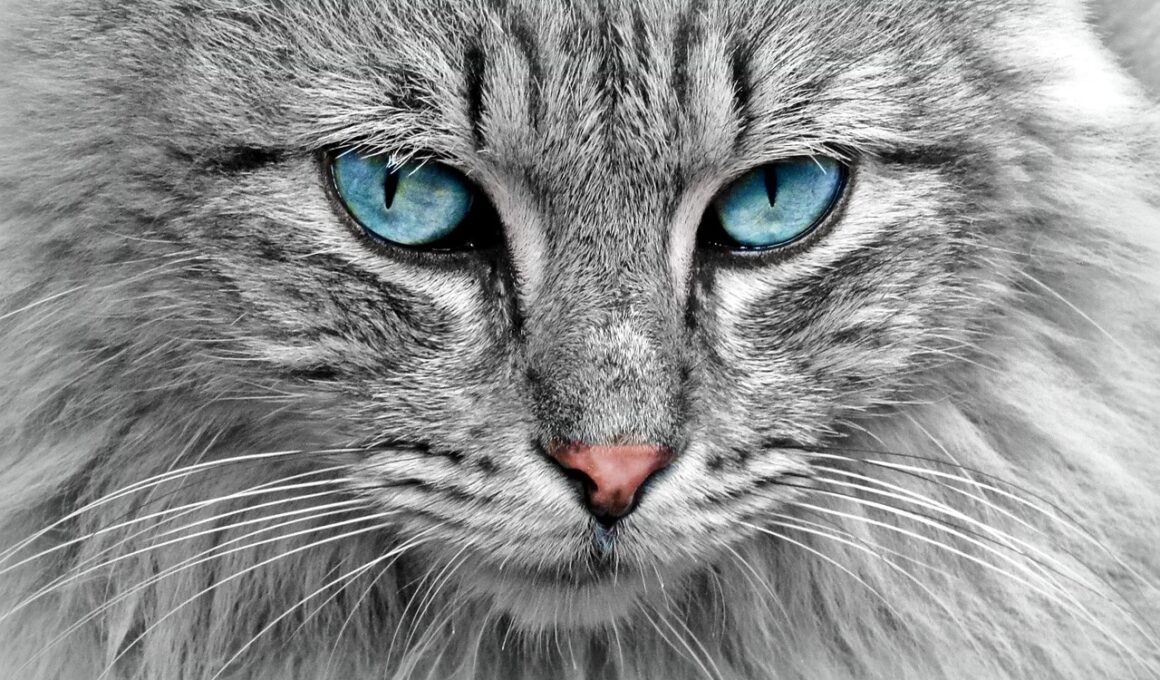How to Introduce New Elements into Your Cat’s Environment Safely
Many cat owners often think about how to introduce new elements into their cat’s environment safely. The first step is identifying the changes that will be introduced. Whether you are adding new furniture, changing the layout of a room, or even bringing in a new pet, it is crucial to understand how these changes might affect your cat. Cats can be very sensitive to their surroundings, and an unexpected change may lead to stress or anxiety. Starting the process slowly will allow your cat time to adjust gradually. Before introducing any new item, consider placing it in an area where the cat can observe it without feeling threatened. This allows the cat to investigate the new surroundings at its own pace, providing comfort to your feline friend. During this observation phase, reward your cat with treats and praise for positive interactions with the new elements. You should also monitor your cat for any signs of distress during this adjustment period. Taking action allows for a smoother transition overall.
Consistency is crucial when introducing new elements into your cat’s environment. Cats thrive on routine, and sudden changes can be disorienting for them. To minimize any disruptions, strive to maintain their daily schedules as much as possible. This includes feeding times, play sessions, and even litter box cleaning routines. If your cat seems overly reactive to the new addition, consider establishing a safe space for them where they can retreat to when overwhelmed. This can be a separate room or a cozy corner with their favorite blanket and toys. In addition, providing vertical spaces like cat trees can help your cat feel more secure in their territory. It’s also beneficial to engage in playtime using new toys gradually, and this can divert their focus and provide less anxiety. Gradually introducing these toys helps your cat associate new items with positive experiences. Keeping the atmosphere calm and supportive during this transition period will not only reduce the stress of change but also foster a healthier bond between you and your feline companion, enhancing their overall well-being.
Understanding Your Cat’s Behavior
It’s essential to recognize your cat’s behavior as an expression of their feelings about new changes in their environment. Observing your cat’s body language can provide insights into their emotional state. For instance, a cat that’s hiding might be feeling anxious, while one that’s curiously sniffing a new object is generally more relaxed. Pay attention to their vocalizations as well. An increase in meowing or hissing could indicate discomfort. Understanding these signs will help you tailor your approach when introducing new items into their space. Moreover, gradual exposure to new elements may give your cat the confidence to explore and adapt. Always ensure that any new items introduced are safe for your cat. Removing any potential hazards such as small objects or toxic materials will also create a welcoming environment. Use pheromone diffusers to ease anxiety for particularly sensitive cats. These artificial comforting scents mimic the pheromones that cats naturally produce, helping to promote relaxation. The adaptability of your cat greatly relies on how safe they feel in their environment.
As you introduce new elements, it’s also beneficial to use positive reinforcement training methods. This approach can significantly ease the tension surrounding new experiences. Offering treats or affection when your cat interacts positively with the new elements will encourage them to explore with enthusiasm. This can be particularly effective for more skittish cats who may need extra motivation. Gradual and repeated introductions will allow for a more pleasant acclimatization process. Creating an environment that celebrates exploration and curiosity will give your cat space to feel in control. Furthermore, if you notice persistent issues or if your cat appears exceedingly stressed despite your efforts, consult your veterinarian. They can provide tailored advice based on your pet’s unique personality and behavior. Sometimes, behavioral adjustments or additional interventions may be needed to foster a more comfortable living situation. Every cat is different, and typical methods may vary broadly in efficacy. Ensure that your strategy aligns with your cat’s temperament and individual needs as you integrate new elements seamlessly into their world.
Tips for a Smooth Transition
To help facilitate a smooth transition for your cat during environmental changes, consider incorporating these practical tips. Start by maintaining familiarity in their environment, as any added stress might exacerbate reactive behaviors. Ensure their food and water bowls remain located in familiar spots, as well as their litter boxes. Offer ample opportunities for play during introductions to mitigate stress, incorporating favorite toys into the mix to encourage exploration. You might gradually rotate existing toys in and out, to keep engagement high without overwhelming them. Additionally, when introducing new pets, it’s important to create a controlled environment where both animals feel secure. Implement scent swapping techniques by allowing them to become accustomed to one another’s scent before any face-to-face meetings. This can be accomplished by using blankets or toys that each pet has interacted with. Taking these steps can promote a more gradual acceptance of new animals in their territory. Moreover, being patient is key during this process; there’s no rush, and each cat will adapt at their own pace. Remember to celebrate small victories during the transition!
Lastly, after successfully integrating new elements into your cat’s environment, continue to monitor their behavior. Changes in behavior can be a strong indicator of how they are responding to the new situation. If you see any regression in their behavior, this could be a sign that they are still feeling stressed. In these instances, it might be beneficial to revert to previous setups temporarily while investigating what specifically might be causing discomfort. This gives your cat time to relax and regain their sense of security. You can gradually introduce the changes again while paying close attention to your cat’s response. Remember that patience and understanding are vital throughout the integration process. Additionally, consider engaging in regular health check-ups with the veterinarian. Overall, recognizing their needs and observing their reactions is vital for their mental and emotional health. Staying alert can have a significant impact on your cat’s overall well-being and happiness in their environment. The goal is to create a harmonious living space that allows for exploration while ensuring they feel safe and secure.
Conclusion
In conclusion, introducing new elements into your cat’s environment safely is an important endeavor that requires thoughtfulness and care. You want to create a space that encourages exploration while keeping your feline companion feeling secure and comfortable. By recognizing their stress signals, maintaining routines, and providing safe spaces, your cat will have a better chance to adapt positively to changes. Remember that patience is just as crucial as observation, allowing your cat to explore at their own pace without pressure. Incorporate positive reinforcement to celebrate their curiosity and bravery as they navigate through their newly enriched environment. If challenges arise, seeking professional advice may be prudent in tailoring approaches to your cat’s specific needs. Ultimately, taking these steps can improve your cat’s living quality while fostering a deeper bond with you as their caregiver. Striving for an enriching environment that allows them joy while minimizing anxiety should always be the ultimate goal as a responsible pet parent. By following these strategies, you’ll be on your way to helping your cat embrace new experiences in life!
By understanding your cat’s behavior and responding appropriately to their needs, you will set the stage for their healthy adjustment. Keeping all these essential factors in mind will equip you to introduce new elements into your cat’s home environment effectively and compassionately.


